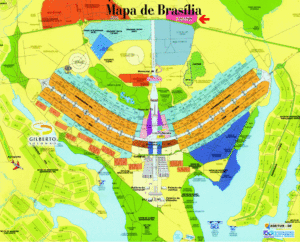USFQ and Beyond – Ciudades del Futuro – 02.
Instituciones:
Las instituciones son reglas de comportamiento de conocimientos común que nos permiten coordinar nuestras activiadeds.
Formales vs. informales.
Hay instituciones que emergen de forma espontánea, vs. las diseñadas.
Ejemplos:
- Instituciones caninas.
- Cichle en Singapur.
- Torear los autos.
- Lenguaje, es una institución informal(el Castellano sería formal), y también es informal.
- Dinero.
- Forma de saludar.
Las instiuciones no son lo mismo que las orgnaizaciones.
Organicación: un grupo de personas que trabajan para un fin común.
El orden social emerge de las instituciones:
Reglas simples llevan a estructuras complejas.
Instituciones locales llevan a comportamiento complejo.
Se genera un órden espontáneo.
Reglas simples y locales lleva a estructuras complejas en el agregado.
Hay instituciones que llvean a mejores o peoores desempeños.
¿Cómo se cambian las instituciones?
- Instituciones pegajosas.
- Revolución Francesa.
Hay reglas que tienen consecuencias locales y otras que tienen consecuencias globales(individuo vs. sistema).
La hora ecuatoriana no ayuda a cordinar el tiempo de la gente.
Las decisiones públicas:
- Ejemplo: un viaje a la playa.
- Costos externos de las decisiones públicas y las externalidades políticas.
- Escala de las decisiones.
- Tiempo.
- Consecuencias.
- Maneras de decidir:
- Unanimidad.
- Mayoría.
- Dictador(alinear los incentivos).
Dos niveles de decisiones públicas:
En base a los costos de decisión, no todo debe ser democrático.
- Decidir como vamos a decidir (constitución – estatuto).
- Momomento constitucional.
- ¿La escala estado noción es la adecuada?
- Decisiones dentro del juego(política).
- ¿Qué cosas entran en le campo de las decisiones públicas?
- Depende de la escala.
- ¿Cuál es la manera adecuada para decidir?
- ¿Sobre qué «decidimos»?
- Dos tipos de intercambios:
- Suma positiva.
- Unanomididad(potencial).
- Intercambio de derechos: cuando tenemos la esclaa adecuada.
- Suma negativa.
- Intercambios de derechos:
- Suma positiva.
Leer libros de Christopher Alexander – A city is not a tree.
Leer libros de Lirkpatrick – Human scale.
Mark Lutter:
Charter Cities:
What if we could create new cities from scratch?
There are over 70 million new urban residents annually, that is like 10 new Hong Kongs. Future urbanizations is concentrated in Africa and Asia.
Urbanization without industralization.
Historically urbanization and economic development have hand in hand.
People moved to cities and became more productive, generating economic growth.
This correlation has broken down in parts of the world, primarily sub-Saharan Africa.
Mumbai: 42 million.
Kinshasa: 35 million.
Lagos: 32 million.
Khartoun: 16 million.
Dar es Salaam: 16 million.
Luanda: 14 million.
Nairobi: 14 million.
Gobernance: is teh process of interaction and decision-making that lead to the development of norms, practices and laws.
Good governance makes countries thrive.
Ver el crecimiento de Hong Kong y Singapur.
State Capacity: the ability of government to provide public goods, including security and infraestructure.
Rule of law: the resitriction of arbitrary exercise of government authority.
Doing business: the ease of starting a business, hiring employees, conducting commerce, and resolving disputes.
Additional challenges:
Migration: leading to political instability in western countries.
Climate change: will need to relocate urban areas to more hospitable climates.
Refugees: there are 20 million refugees who can languish for generations in «temporary» camps.
Charter cities are public policy tool for governance reforms: the purpose of charter cities is to create an institutional framework in new cities that sets the stage for 50 years of economic growth.
A charter city is a new city with a special jurisdiction that allows it to adopt the best practices in commercial law.
Greenfiled city:_ a new city development on uninhabited land.
Independent administration: a new, independent administrative….
ask for presentation.
Greenfield city: over 120 master planned cities are being built around the world. By focusing greefield developments, its possible to enact deeper reform.
Master Planned Cities:
Independent administration.
Public private partnership between the developer and the government.
Empowered to resond quickly to the needs of the residents and businesses in the city.
Wide range of authority to improve the business environment.
Building a governance system from scratch:
- Business registration.
- Tax administration.
- Property registration.
- Education.
- Tranportation law.
- Labor law.
- Financial law.
- Healthcare law.
- Building codes and construction permits.
Specific steps:
- Evaluate the different areas of law and the political feasibility of reforms in those areas.
- Benchmark laws to best practices around the world.
- Ensure the benchmarks are appropiate to the city population and businesses.
- Draft relevant statues and regulations.
- Set up administrative systems.
«Common Law» vs. «Civil law».
Independent dispute resolution.
Additional important aspects of charter cities:
Location: no one would live in charter city in antartica. Satelllite city vs. new city. Urbanization: is there a demand for new urban areas? Trade patterns: are trade patterns increasing the amount of economic activity in the area?
Urban planning: charter cities are cities, are not real estate. Basic infraestructure should be provided, every detail should be planned. Real estate is planned, units are built then sold. Cities are organic, parameters are set and they change over time.
Brasilia:

New York Commission of 1811: they put the rules, the city grew well.
Anchor tenant:
An anchor tenant is a tenant which creates a large amount of economic activity to offset the costs of the builout. Shopping amlls, for example, attract department stores and charge them low cost per square foot to attract visitors. An anchor tenant for a charter city should set up the type of economic activity the charter city expects to grow in. The anchor tenant should typically be an industry which already exists in the country.
Financing:
Charter cities are capital intensive. Many emerging markets dont have development financial systemsa.
Historical examples: there is a long history of free cities which serve as the inspiration. Examples include Venice, Genoa, and Florence. First examples of proto-modern government where the commercial class ruled insted of the aristocracy. Played a key role in the renaissance.
Hanseatic League in the valtic: non-territorial contigious political unit in the Baltic region. Fought wars of agrresion to open markets. Lubbock law was copied throughout the league, illustrating how good institutional forms can rapidly spread.
Hong Kong: John Cowperwaithe implemented positive non-interventionism. Operated under common law. Per capita GDP increased from $429 in 1960 to $46,000.
Singapur: kicked out of Malasya in 1965. GDP per capita in 1962: $490, in 2017 $56,000. British privy council was highest court from independence to 1989.
Charter Cities Institute:
Builing the ecosystem for charter cities: bring together various stakeholders.
Context:
Two strands of charter cities.
Paul Romers development model: see ted talk.
Silicon Valley techno-utopian model.
Paul Romer´s version involved high income countries governing a city in low income countries.
Neither approach gained traction.
Paul Romer was invited to Madagascar and Honduras. Neither attempt was successful.
- Honduras passed legistlation, but Romer got into a fight with them and left.
- Afterwards Romer stopped talking publicly about charter cities and all the momentum died.
The ecosystem: Charter Cities are the idea whose tiem has come. New City developers, governments, inestors, policy experts.
New City Developers:
Master planned cities are already being built, lowering one fo the barriers to charter cities.
Our goal is to introduce city developers to the ideas of charter cities to spur adoption among city developers.
We are currently working with the three new city developments, in Zambia, Nigeria, and Australia.
Governments: many governments are thinking about building new cities: Indonseai, Egypt, Saudi Arabia.
Governments understand the urbanization.
Investors: charter cities are capital intensive projects.
Best practices: we are working on a charter cities handbook with a draft city charter and regulations. We are working with technology firms to ensure technology solutions are implemented in city governance. The charter cities handbook will serve as a template for charter cities around the world.
Urban planning expertise: how can we plan cities without «planning» them?
Urban population of Ecuador is expected to grow by 6 million by 2050. Ecuador ranks 128.
Twitter: CCldotCity.
Facebook: Charter Cities Institute.
Irvine City: ciudad charter.
https://es.wikipedia.org/wiki/Ciudad_ch%C3%A1rter
https://www.chartercitiesinstitute.org/
https://www.youtube.com/channel/UCesutT0yy4f0FDXwLr5TXhA
Un Charter City en la Refinería de Pacífico.
1200 hectáreas planas, 5000 hectáreas.
30 minutos de un puerto de calado profundo y aeropuerto internacional.
30 minutos de los mayores centros de población(millón entre Manta, Montecristi, y Portoviejo).
Producción:
Atún.
Alimentos procesados.
Turismo.
Refugio de Vida Silvestre y Marino Costera Pacoche.
Refinería de pacífico: Estatus:
Alrededor de 1250 hectáreas planas.
Acueducto La Esperanza de 5,000 m3/hr.
En proceso de liquidación, empresa pública con participación de PDVSA.
Legislación:
- Código de la producción, 3 tipos de ZEDES(Zonas Especiales de Desarrollo Económico), Logístico, Industrial, Transferencia de tecnología.
- Se necesita un SPV(special Purpose Vehicle) conformado bajo una APP.
- Legislación nueva.
Speed dating de ideas:
«Si y….»
Prohibido, «sí, pero.»
Humildad intelectual.
